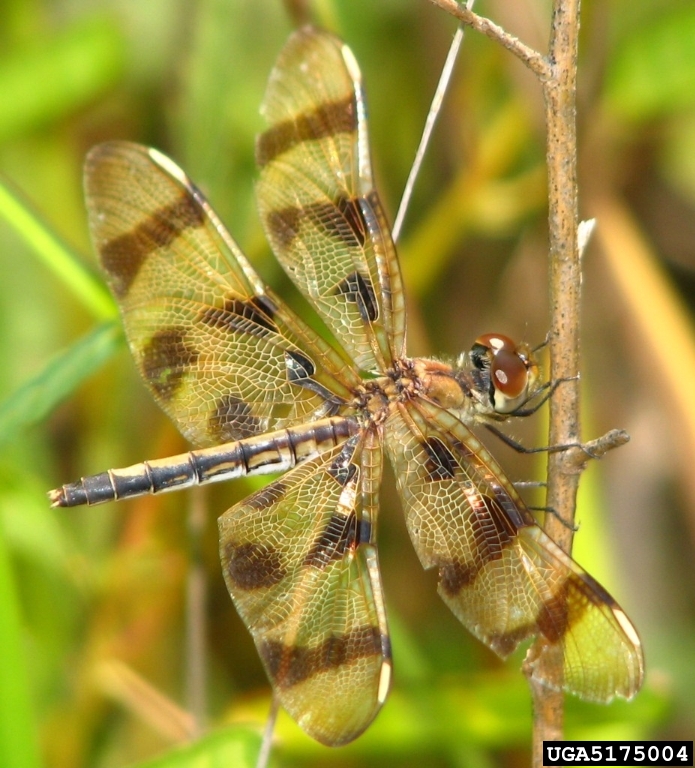New experiments have revealed an aerodynamic trick that dragonflies use to fly efficiently — a trick that engineers could exploit to improve the energy efficiency of small aerial vehicles with a similar design.

Dragonflies are aerial acrobats of the highest order: They can glide, hover, fly backward and even mate on the wing. Much of this agility stems from the insect’s ability to flap and control each of its four wings independently, says Jim Usherwood, a zoologist at the University of London’s RoyalVeterinaryCollege in North Mymms, England. Previous studies have suggested that the dragonfly’s closely spaced pairs of wings actually produce less lift than two widely separated pairs of wings would. Nevertheless, says Usherwood, fossils indicate that dragonflies have maintained their distinctive wing configuration for more than 300 million years.
Usherwood and colleague Fritz-Olaf Lehmann of the University of Ulm in Germany studied a model of a dragonfly’s wings in a tank filled with mineral oil. In some of the experiments, designed to represent a dragonfly in hovering flight, the forewings and hind wings flapped together; in others, the wing pairs flapped out of sync with each other. Sensors at the base of each wing enabled the researchers to compute lift and drag forces on the flight surfaces, and tiny bubbles in the fluid helped the researchers visualize the flow over the wings.
In most of the experiments, flow spilling off the flapping forewings reduced the lift produced by the hind wings, says Usherwood. However, the tests suggest that when the hind wings flap downward before the forewings do, a dragonfly can generate the same amount of lift even though it expends less energy. At the optimal delay between the forewings and the hind wings — that is, in a flapping style where the hind wings were midway through their downward stroke just as the forewings began their downstroke — hovering required 22 percent less power than a scenario in which only the forewings were used to generate lift. Usherwood and Lehmann report their findings in an upcoming Journal of the Royal Society Interface.
Dragonflies are “the fighter jets of the insect world,” says Tyson L. Hedrick, a biologist at the University of North Carolina at Chapel Hill. Therefore, this group’s retention of four wings when most flying insects have only one functional pair was commonly thought to have provided some evolutionary benefit. The new research “shows that insect flight may be more efficient than previously appreciated,” he notes.
This study will be of interest to engineers designing tiny dragonfly-like drones for surveillance or reconnaissance purposes, says Richard J. Bomphrey, a zoologist at the University of Oxford in England. One of the main challenges for designers will be aerial endurance: The longer a battery lasts, he notes, the farther such a craft can fly. “Any tips or tricks which enhance aerodynamic efficiency will be warmly welcomed,” Bomphrey adds.
“Every increase in efficiency for a robotic insect will translate into longer operating times,” says Robert J. Wood, an engineer specializing in microrobotics at HarvardUniversity. Even though a four-winged robotic insect is potentially more challenging to construct than a two-winged device, perhaps the efficiency benefit of a four-winged robot would justify its added mechanical complexity, he suggests.





